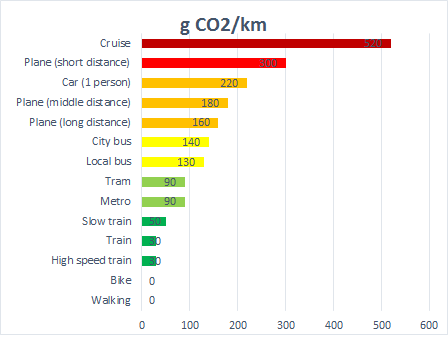Air Pollution Cruise
Air pollution from cruise ships is generated by diesel engines that burn high sulfur content fuel oil, also known as bunker oil, producing sulfur dioxide, nitrogen oxide and particulate, in addition to carbon monoxide, carbon dioxide, and hydrocarbons. Diesel exhaust has been classified by EPA as a likely human carcinogen. EPA recognizes that these emissions from marine diesel engines contribute to ozone and carbon monoxide non-attainment (i.e., failure to meet air quality standards), as well as adverse health effects associated with ambient concentrations of particulate matter and visibility, haze, acid deposition, and eutrophication and nitrification of water
Of total global air emissions, shipping accounts for 18 to 30 percent of the nitrogen oxide and 9 percent of the sulphur oxides. Sulfur in the air creates acid rain which damages crops and buildings.
Cruise ships might emit more sulphur than several million cars, more NO2 gas than all the traffic passing through a medium-sized town and more particulate emissions than thousands of London buses. According to leading independent German pollution analyst Axel Friedrich, a single large cruise ship will emit over five tonnes of NOX emissions, and 450kg of ultra fine particles a day. They use a lot more power than container ships and even when they burn low sulphur fuel, it’s 100 times worse than road diesel.
Garbage
On a typical one-week voyage a cruise ship generates more than 50 tonnes of garbage and a million tonnes of grey (waste) water, 800.000 liters of sewage and 135.000 liters of oil-contaminated water. Some of this is pumped into ocean and some treated.
Sources
- https://www.theguardian.com/environment/2016/may/21/the-worlds-largest-cruise-ship-and-its-supersized-pollution-problem
- https://co2.myclimate.org/en/cruise_calculators
- https://en.wikipedia.org/wiki/Environmental_impact_of_shipping
- http://www.martrans.org/emis/
- http://www.hl-cruises.com/company/environmental-management/climate-calculator


